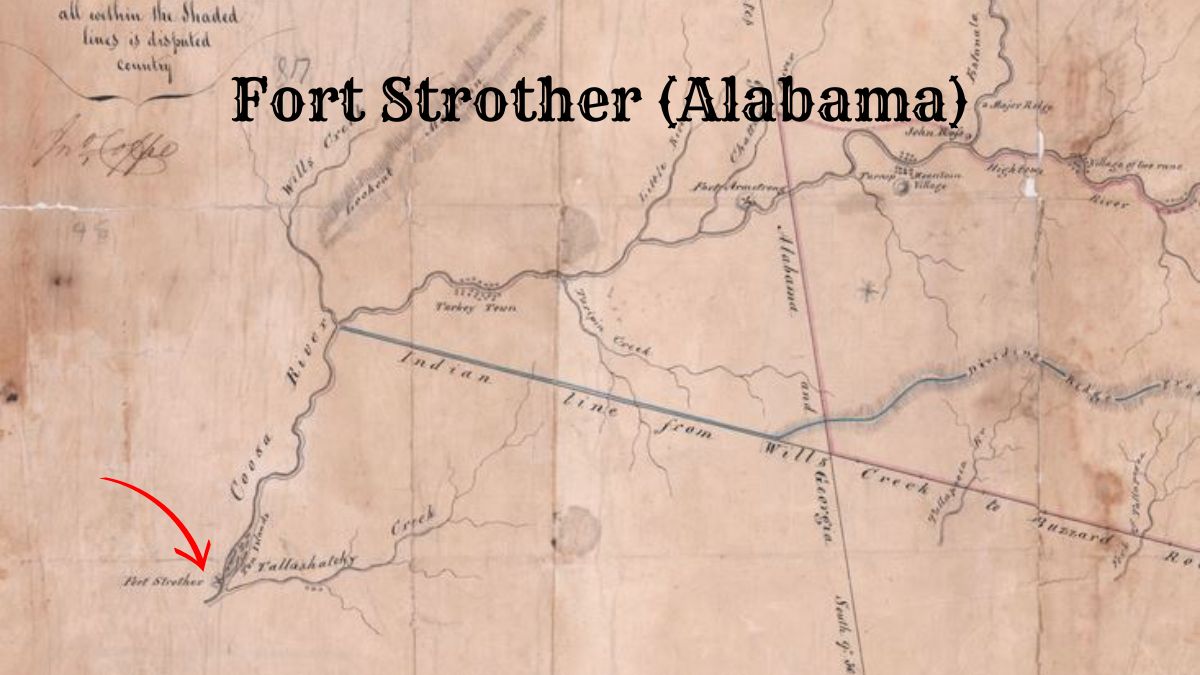Fort Strother, established in 1813 during the Creek-Indian War, played a crucial role in American military history.
Strategically located on the Coosa River in present-day Alabama, it served as General Andrew Jackson’s base of operations.
Jackson launched successful campaigns from this fort, including the pivotal Battle of Talladega.
Beyond its military significance, Fort Strother was instrumental in American expansion, facilitating the displacement of Native American tribes and solidifying U.S. control in the Southeast.
The fort’s legacy is marked by its strategic importance, the leadership of notable figures, and its lasting impact on the region’s development and history.
History of Fort Strother (Alabama)
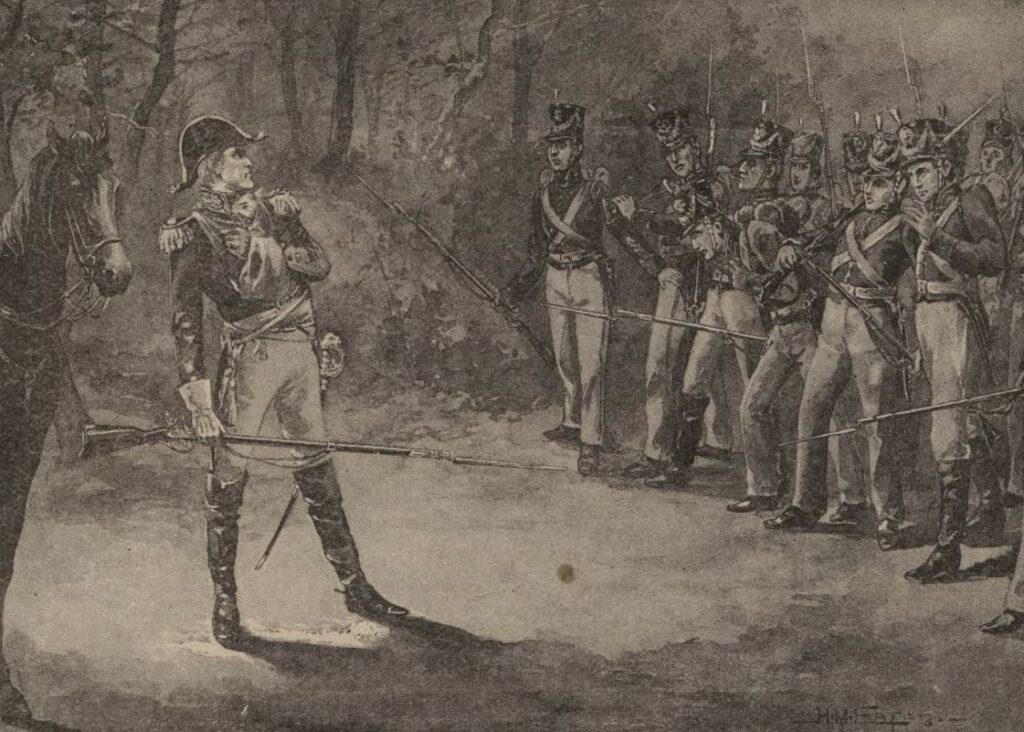
Fort Strother was critical during the early 19th century, primarily influencing the Creek Indian War and American expansion.
Creek Indian War
Fort Strother served as a key military base for General Andrew Jackson during the Creek Indian War.
Constructed in 1813, it was strategically located on the Coosa River in modern-day Alabama, offering a prime spot for launching military campaigns against the Creek Nation.
This fort became Jackson’s headquarters, where he directed notable battles, including the Battle of Talladega in November 1813.
His forces’ victory there significantly weakened Creek resistance, paving the way for further campaigns.
Fort Strother also functioned as a supply depot, ensuring that Jackson’s troops were well-provisioned throughout the war.
Role in American Expansion
After the Creek Indian War, Fort Strother symbolized the broader push of American settlers into Native American territories.
The fort facilitated American expansion by helping secure vital territories previously controlled by the Creek Nation. This expansion solidified U.S. claims in the southeastern United States.
General Andrew Jackson’s success in the region, supported by the fort, elevated his national profile, eventually leading to his presidency.
The fort’s presence also hastened the removal of Native American tribes from their ancestral lands, aligning with the U.S. government’s policies of the era.
Geography Surrounding Fort Strother
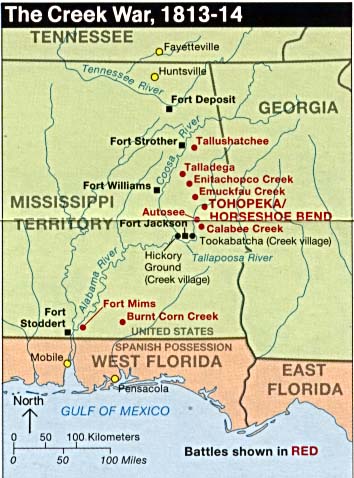
Fort Strother’s location is significant due to its proximity to the Coosa River, its place within St. Clair County, and its strategic military positioning.
Coosa River Proximity
Fort Strother is situated near the Coosa River. This river played a vital role in the fort’s logistical operations.
The Coosa River provided a reliable water source and facilitated transportation. Supplies and troops could be easily moved via the river.
Its presence supported sustained military operations, including the movement of artillery and other heavy equipment.
The river also offered a natural defense barrier and enabled trade and communication with other settlements.
St. Clair County Commission
Fort Strother is located in St. Clair County, Alabama. The establishment of the fort within this county significantly influenced local governance.
The fort directly impacted the area’s development in the northern part of the county.
The St. Clair County Commission oversees the county’s administration and helps establish and maintain the fort.
The county’s support was crucial for the fort’s provisioning and security. This symbiotic relationship helped manage resources and maintain order.
Strategic Location
The strategic location of Fort Strother made it a key military asset.
The fort was positioned in Alabama and was a launching point for various military campaigns. Its location allowed control over the surrounding region and facilitated communication between military posts.
Fort Strother’s placement on higher ground provided defensibility against attacks.
Its strategic importance was evident in several military engagements. The fort’s position allowed for quick troop deployments and efficient supply chain management, making it indispensable for military leadership.
Military Engagements and Leadership
Fort Strother played a significant role during the Creek War, involving key battles and leadership, particularly that of General Andrew Jackson and the factions within the Creek Nation.
Battle of Talladega
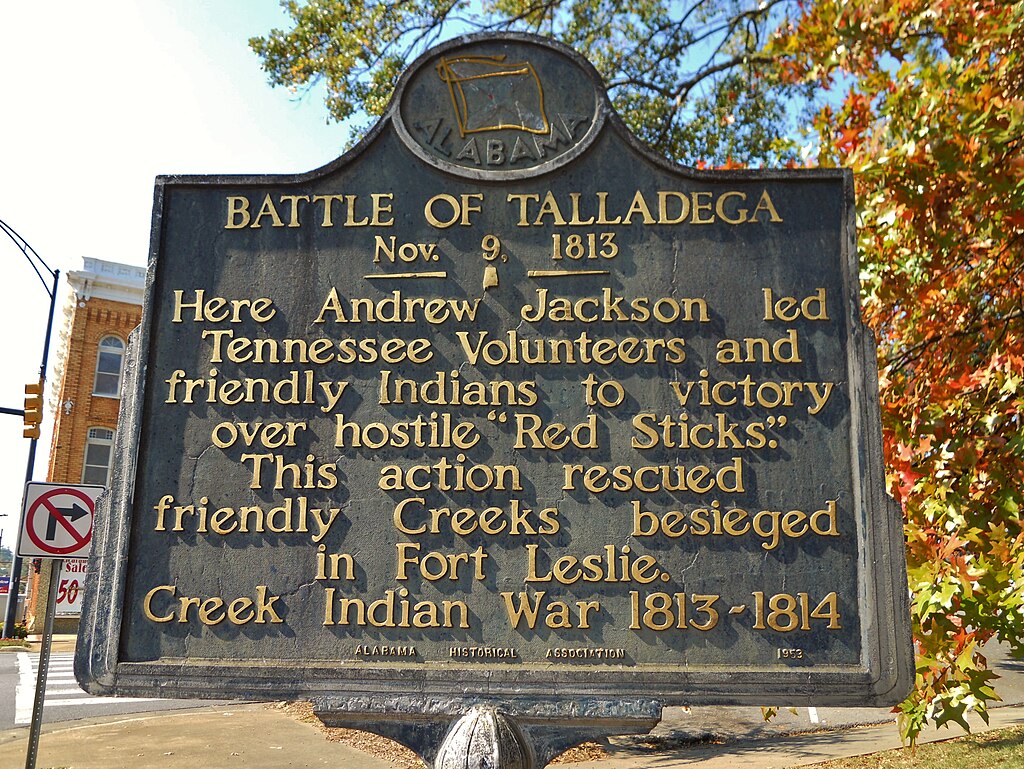
The Battle of Talladega occurred on November 9, 1813.
General Andrew Jackson led a force of 2,000 men, including American forces and Friendly Creeks, against the Red Sticks, a faction of Creek Warriors. The deadliest confrontation at this battle happened near the city of Talladega.
General Jackson strategized a successful attack despite supply shortages. His tactics resulted in a decisive victory for his troops.
The Red Sticks suffered heavy casualties, significantly weakening their position in the region.
General Andrew Jackson’s Campaigns
General Andrew Jackson’s campaigns from Fort Strother were instrumental in the Creek War.
Strategic fortifications and bold initiatives characterized his leadership. He leveraged Friendly Creeks’ allied strength alongside American forces.
Under his command, numerous expeditions sought to dismantle the Red Stick strongholds.
His unyielding resolve in battle and astute military leadership garnered significant victories, culminating in the decisive defeat of the Red Sticks at the Battle of Horseshoe Bend in 1814.
Camp Stro During the War
Camp Stro, part of Fort Strother, functioned as a key base of operations during the Creek War.
It was essential for troop mobilization, supply distribution, and strategic planning.
The camp housed American forces and provided a strategic launching point for numerous campaigns against the Red Sticks.
General Jackson utilized Camp Stro to maintain morale and readiness among his troops. This base was pivotal in sustaining military efforts until the war’s conclusion.
Explore More: 19 Historic Forts in Alabama
Cultural and Legal Impact
Fort Strother affected the region’s land use and legal framework for cultural development.
These influences are evident in the historical documentation and legal records preserved from that period.
Land Grants and Settlement
Fort Strother was critical in land grants and settlement patterns during the early 19th century.
As a military outpost, it served as a base for expeditions and facilitated the distribution of land grants to settlers.
These grants were instrumental in establishing new communities and encouraging agricultural development.
The policies governing land grants often followed federal and state laws, which aimed to manage the allocation of lands systematically.
The Library of Congress houses various documents from this era detailing these grants’ legal intricacies.
The implications of these settlements had long-term effects on demographic and economic trends in the United States.
Surviving Documentation
Documentation from Fort Strother provides a valuable window into the era’s cultural and legal impacts.
Many records are preserved under the Creative Commons Attribution-ShareAlike License, enabling researchers to access and share these historical materials.
These documents, preserved in the Library of Congress and other archives, include letters, legal agreements, and military orders.
Such surviving documentation offers insights into the operations at Fort Strother and the broader implications for American legal history, helping to understand the terms and conditions under which land was allocated and settled.
Notable Personalities
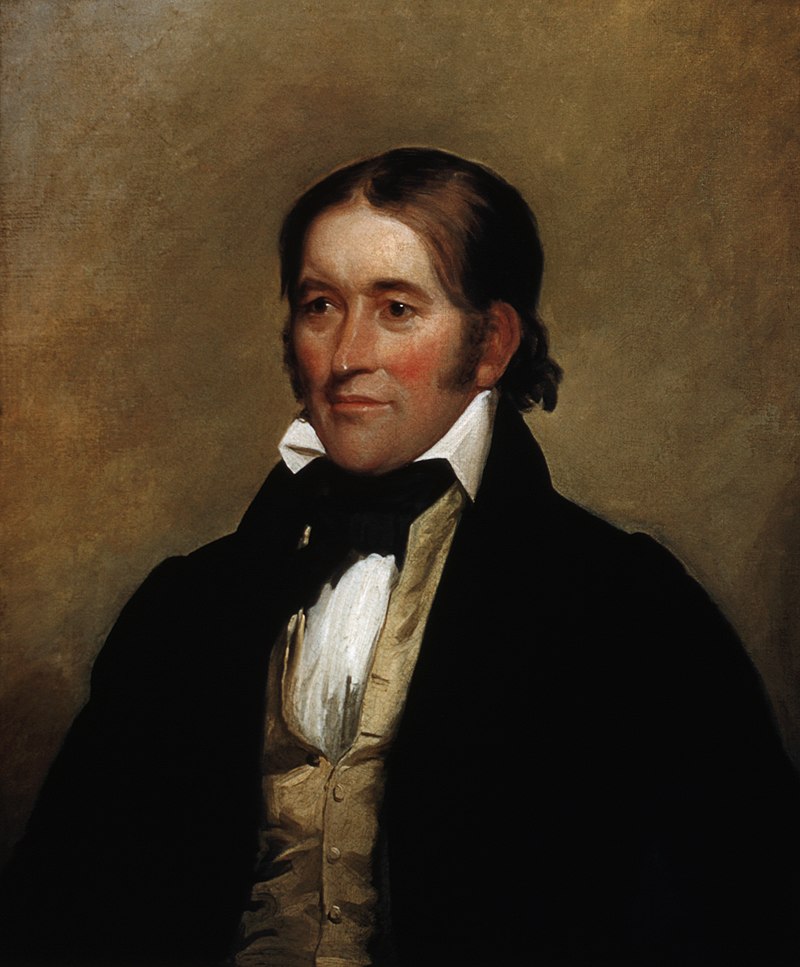
Fort Strother played a pivotal role in various historical events and strategies. The involvement of key figures and leaders from different sides of the conflict directly influenced it.
Davy Crockett and Sam Houston
Davy Crockett and Sam Houston were two notable Americans associated with Fort Strother.
Crockett, known for his role as a frontiersman and soldier, served under General Andrew Jackson during the Creek War. His contributions, though largely in a supporting role, helped bolster the troops’ morale.
Sam Houston also played a critical role. He was a young officer under General Andrew Jackson and later rose to prominence for his military and political career.
Houston was instrumental in numerous skirmishes and battles, often working closely with Jackson.
These figures are often celebrated for their bravery and leadership.
Their involvement at Fort Strother helped shape their later actions in American history, particularly in the broader context of westward expansion and their subsequent political careers.
Creek Leaders and Negotiators
On the other side, Creek leaders and negotiators played a significant role in the events surrounding Fort Strother.
The Creek War saw numerous Creek leaders emerging, crucial in organizing resistance against American forces.
Chief Menawa, a prominent Creek leader, was deeply involved in the conflict. He led warriors in several battles, showcasing considerable strategic acumen and resistance against overwhelming odds.
Another important figure was William Weatherford, also known as Red Eagle.
Though initially resistant, he played a part in the eventual negotiations and surrender to General Andrew Jackson. His actions were pivotal in bridging the gap between continued conflict and the possibilities for peace negotiations.
Explore More: Army Forts in Alabama
Legacy and Memory
Fort Strother’s legacy has been preserved through monuments, heritage sites, and educational resources that offer detailed historical insights.
Monuments and Heritage Sites
Fort Strother is commemorated through various monuments and heritage sites.
These sites honor the fort’s history and significance, particularly its role in the Creek War. Old Hickory was crucial in the engagements here, adding to the site’s historical importance.
Fort Mims is another related site, which marks the location of a pivotal battle connected to the events surrounding Fort Strother.
The Library of Congress holds numerous records and documents that provide valuable information about these locations.
Many sites are maintained under the Creative Commons Attribution-ShareAlike License, enabling widespread access and preservation efforts.
Educational Resources
Educational resources about Fort Strother are abundant.
Schools and universities incorporate its history into their curricula, often using materials available under the Creative Commons Attribution-ShareAlike License.
The Library of Congress offers extensive archives, including maps, documents, and firsthand accounts that contextualize the events associated with Fort Strother.
These resources help educators and students delve into the historical narratives and understand the strategic significance of the fort.
Historians frequently reference these materials to ensure accuracy and detail in their studies and publications.

Cory is a website owner and content creator who enjoys fishing, history, coin collecting, and sports, among other hobbies. He is a husband and father of four.
Romans 15:4 For whatever was written in former days was written for our instruction, that through endurance and through the encouragement of the Scriptures we might have hope.

